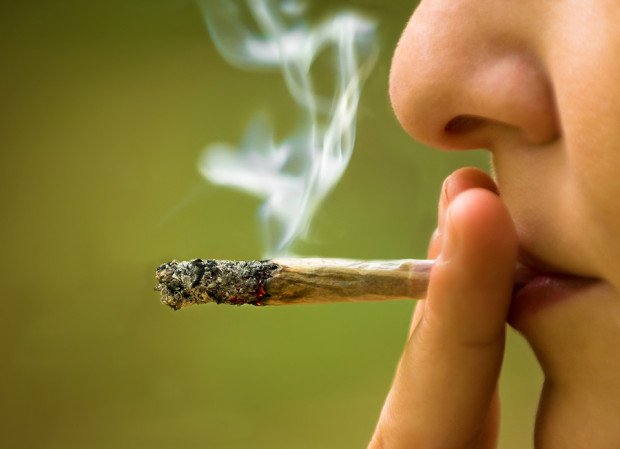Overall Drug Positivity Holds Steady at Historically High Rates while Marijuana Positivity Continued Upward Climb in the General U.S. Workforce
A new report highlights the startling upward trend of drug test cheating in the workplace.
The percentage of employees in the general U.S. workforce whose drug test showed signs of tampering increased by more than six-fold in 2023 versus the prior year, the highest rate ever in more than 30 years of annual reporting.
The finding is the result of a new analysis of nearly 9.8 million workforce drug tests by Quest Diagnostics, a diagnostic information service.
Another finding indicates those workers testing positive for marijuana use escalated in states that have legalized recreational marijuana as well as in professional office-based industries.
The increase in substituted urine specimens in the general U.S. workforce population of over 5.5 million, was 633 percent (0.015 percent in 2022 versus 0.11 percent in 2023).
Invalid urine specimens in the general U.S. workforce increased 45.2 percent (0.31 percent in 2022 versus 0.45 percent in 2023).
A result of substituted or invalid suggests a specimen has been tampered with in an attempt to conceal drug use, the Report noted.
“The increasing rates of substituted or invalid specimens coincide with historically high rates of both general U.S. workforce drug positivity and post-accident marijuana positivity,” the report stated.
Drug positivity in the general U.S. workforce was 5.7 percent in both 2022 and 2023.
In 2023, in the combined U.S. workforce, urine drug positivity for all drugs was 4.6 percent, the same as in 2021 and 2022.
This overall positivity is the highest level in more than two decades, up more than 30 percent from an all-time low of 3.5 percent in 2010-2012, and coincides with a sharp increase of 114.3 percent in post-accident positivity between 2015 and 2023 in the general U.S. workforce, the report added.
“The increased rate of both substituted and invalid specimens indicates that some American workers are going to great lengths to attempt to subvert the drug testing process,” said Suhash Harwani, Ph.D., senior director of Science for Workforce Health Solutions at Quest Diagnostics. “Given the growing acceptance and use of some drugs, particularly marijuana, it may be unsurprising that some people feel it necessary to try and cheat a drug test. It is possible that our society’s normalization of drug use is fostering environments in which some employees feel it is acceptable to use such drugs without truly understanding the impact they have on workplace safety.”
Similar trends were also seen in the federally mandated, safety-sensitive U.S. workforce, with substituted specimens increasing 370.6 percent (0.017 percent in 2022 versus 0.08 percent in 2023) and invalid rates increasing 36.7 percent (0.30 percent in 2022 versus 0.41 percent in 2023).
“Organizations must have sound policy and procedures to ensure employee drug testing programs have efficacy. Cheating on drug tests not only undermines workplace safety but also jeopardizes the safety of society as a whole,” said Katie Mueller, a senior program manager at the National Safety Council focusing on cannabis safety. “Companies, regulators and policymakers must prioritize accountability for the well-being of all individuals in our communities; lives depend on it.”
Marijuana Use Continues Upward Climb
Marijuana positivity in the general U.S. workforce increased 4.7 percent (4.3 percent in 2022 versus 4.5 percent in 2023). Over five years, marijuana positivity has increased 45.2 percent, with 2023 reaching a new peak compared to 2019 (3.1 percent in 2019 versus 4.5 percent in 2023).
In the federally mandated safety-sensitive workforce, marijuana positivity decreased nationally 3.1 percent year over year (0.98 percent in 2022 versus 0.95 percent in 2023).
Marijuana positivity stayed the same (1.1 percent in both 2022 and 2023) in states in which recreational marijuana is legal and decreased 2.2 percent (0.90 percent in 2022 versus 0.88 percent in 2023) in states in which medical marijuana is legal, the report noted.
In states in which neither recreational nor medical marijuana use is legal, marijuana positivity decreased 6.7 percent (0.89 percent in 2022 versus 0.83 percent in 2023) year over year and stayed the same over five years (0.83 percent in 2019 versus 0.83 percent in 2023).
“The federally mandated, safety-sensitive population has a lower rate of drug positivity, likely due to the fact that there is decreased drug use when there is an expectation of being drug tested. This is fundamentally the strength of having a drug testing program. The mere expectation of drug testing may be a deterrent, dissuading individuals from both drug use and applying for positions where such tests are standard practice,” said Dr. Harwani.
Post-accident Marijuana Positivity Continues to Climb
In 2023, post-accident marijuana positivity of urine drug tests in the general U.S. workforce was 7.5 percent.
The new peak follows a steady increase in post-accident marijuana positivity every year from 2015 to 2023. In that 9-year time frame, post-accident marijuana positivity increased 114.3 percent, according to Quest Diagnostics’ analysis.
The data aligns with other reports associating marijuana legalization with workplace harms.
A February 2024 study in the Journal of the American Medical Association (JAMA Health Forum) found recreational marijuana laws that allow recreational marijuana sales were associated with a 10 percent increase in workplace injuries among individuals aged 20 to 34 years.
“As the prevalence of marijuana positives in the workforce rises, our concern grows,” said Mueller. “The data show an increasing correlation between marijuana use and adverse workplace effects, prompting a call for heightened vigilance and comprehensive strategies to safeguard workplace safety and productivity.”
“Most employers are highly focused on productivity, which can be achieved by improving workforce health and wellness. A well-executed drug testing program can help an organization to maintain a healthier a workforce which, based on our data, could decrease the potential for accidents or other unsafe behaviors,” added Dr. Harwani.
Positivity Increased in Industries Associated with Office Work
Overall drug workforce positivity increased in industries associated with “office work,” such as administrative, managerial, and clerical tasks within office environments.
Workforce positivity increased in Real Estate and Lending by 17.0 percent (4.7 percent in 2022 versus 5.5 percent in 2023); Professional, Scientific and Technical Services by 9.3 percent (4.3 percent in 2022 versus 4.7 percent in 2023); Educational Services by 7.9 percent (from 3.8 percent in 2022 to 4.1 percent in 2023); and Public Administration by 5.0 percent (4.0 percent in 2022 to 4.2 percent in 2023).
The report found that marijuana positivity increased in 13 out of 15 industries led by Finance and Insurance which increased 35.7 percent (2.8 percent in 2022 versus 3.8 percent in 2023); Public Administration which increased 23.5 percent (1.7 percent in 2022 versus 2.1 percent in 2023); and Real Estate Rental and Leasing which increased 22.2 percent (5.4 percent in 2022 versus 6.5 percent in 2023).
“It isn’t clear why we’re seeing an increase in overall and marijuana drug positivity in office workers, but it isn’t a stretch that a combination of unprecedented stress and isolation during the pandemic with work-from-home policies during and post-pandemic may be contributing to greater drug use in employees in traditionally white-collar fields,” said Sam Sphar, Vice president and general manager, Workforce Health Solutions, Quest Diagnostics. “The results underscore the growing need for mental health support and drug education programs to ensure employees are safe and productive, whether working at home or in the office.”
Urine Drug Test Positivity Among Other Drug Types
Cocaine positivity in the general U.S. workforce increased 9.1 percent (0.22 percent in 2022 versus 0.24 percent in 2023).
Amphetamines positivity remained flat (1.5 percent in 2022 and 2023) and 6-AM (heroin metabolite) positivity decreased 16.7 percent (0.006 percent in 2022 versus 0.005 percent in 2023).
Opiates (codeine/morphine) positivity decreased 12.5 percent (0.16 percent in 2022 versus 0.14 percent in 2023), Opiates (hydrocodone/hydromorphone) decreased 9.4 percent (0.32 percent in 2022 versus 0.29 percent in 2023) and Oxycodone (Oxycodone/Oxymorphone) also decreased 3.6 percent (0.28% in 2022 versus 0.27% in 2023), continuing a downward trend over five years for all three drug categories, the analysis showed.
To view the full report, visit www.QuestDiagnostics.com/DTI.





















 Study Finds Rate of U.S. Coastal Sea Level Rise Doubled in the Past Century
Study Finds Rate of U.S. Coastal Sea Level Rise Doubled in the Past Century  Slideshow: Carrier Management’s 2025 Top Editor’s Picks (Unlocked)
Slideshow: Carrier Management’s 2025 Top Editor’s Picks (Unlocked)  U.S., UK, and Canada Consumers Suffer the Most Data Breaches: Report
U.S., UK, and Canada Consumers Suffer the Most Data Breaches: Report  Expense Ratio Analysis: AI, Remote Work Drive Better P/C Insurer Results
Expense Ratio Analysis: AI, Remote Work Drive Better P/C Insurer Results 